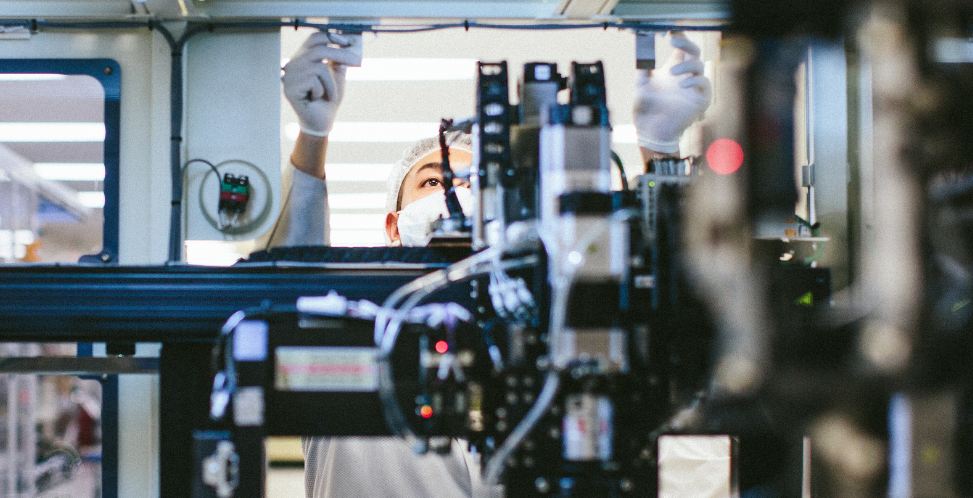By far the biggest U.S. solar policy development in the past two years has been the Trump Administration imposing global tariffs on solar cells and modules under Section 201. And as is natural, this was also the biggest priority of the Solar Energy Industries Association (SEIA), which under new president and CEO Abigail Hopper fought tooth and nail to prevent this from happening.
In fighting these tariffs, SEIA was poised against companies with U.S. cell and module factories which initiated and supported the Section 201 process, including Suniva, SolarWorld and ITEK.
And while SEIA never formally accepted defeat, today was a sign that the war is over. At the Solar Power Southeast trade show, Abigail Hopper announcing that the solar trade group is adding a new manufacturing division, with Hanwha Q Cells among the first members.
Hanwha Q Cells’ presence is particularly strategic, given that the company recently opened a 1.7 GW module factory in North Georgia – the largest module assembly facility in the Western Hemisphere. However the division is also open to companies who have no U.S. manufacturing presence, such as REC Group.
Specifically, this will give manufacturers a specific seat on the SEIA board, which many argue has long been dominated by developers.
Not just modules
The new division does not only include cell and module makers, but also the manufacturers who have long had a presence in the United States and who were staunchly opposed to the Section 201 case: racking, tracking and mounting systems makers. And this point was hammered home by PanelClaw CEO Costa Nicolaou on a panel on U.S. manufacturing at the Solar Power Southeast show.
“Solar manufacturing involves inverters, it involves racking, it involves balance of system components,” declared Nicolaou. “Panels are a sliver of U.S. manufacturing.”
By jobs this is particularly true. While Hanwha Q Cells’ new factory will employ 600 workers among the few thousand making modules in the United States, this compares to many more making racking, tracking and mounting systems.
PanelClaw is opening new factories in the U.S. Midwest, and will be joining the the new manufacturing division.
Supply chains
However, even for module makers, there is a need for components, and one of the largest issues for any manufacturer is the location of supply chains.
This is a challenge for U.S. module makers, as much of the supply chains have moved overseas as cell and module factories moved to Asia. And now, with the return of limited U.S. module manufacturing, there is a question as to whether or not these will return.
“We hope to be of the size to incentivize local manufacturing,” notes Scott Moskowitz, the director of market strategy at Hanwha Q Cells. “Having the buying power will encourage supply chains to move.”
Protectionism vs. industrial policy
Now that SEIA is explicitly representing solar manufacturing, there is the question of what sort of policies it will endorse to support U.S. production. Global import tariffs remain highly unpopular across most of the U.S. solar industry – including among the Asian PV makers who have set up factories in the United States, as they also ship product from China and other nations.
This aligns with the new trends in political thought, with New Consensus, the think tank behind the Green New Deal, promoting a proactive industrial policy as part of that concept.
However, there is the significant question of what will be allowed under WTO regulations, which prohibit protectionist measures. SEIA General Counsel and VP of Market Strategy John Smirnow has noted that SEIA will be holding a workshop on policy approaches that fit this mold.
In general, Smirnow says that while domestic content requirements are forbidden, that tax credits and tax holidays are generally permissible if they are not tied specifically to exports.
It’s a new day for solar manufacturing in the United States, and as the market grows, there is the inevitable question of how much of the product deployed will be made in America. It will be hard for the United States to compete in this regard with China and other Asian nations that heavily subsidize their manufacturing and have developed both skilled labor and supply chains.
This content is protected by copyright and may not be reused. If you want to cooperate with us and would like to reuse some of our content, please contact: editors@pv-magazine.com.









By submitting this form you agree to pv magazine using your data for the purposes of publishing your comment.
Your personal data will only be disclosed or otherwise transmitted to third parties for the purposes of spam filtering or if this is necessary for technical maintenance of the website. Any other transfer to third parties will not take place unless this is justified on the basis of applicable data protection regulations or if pv magazine is legally obliged to do so.
You may revoke this consent at any time with effect for the future, in which case your personal data will be deleted immediately. Otherwise, your data will be deleted if pv magazine has processed your request or the purpose of data storage is fulfilled.
Further information on data privacy can be found in our Data Protection Policy.